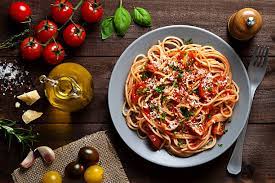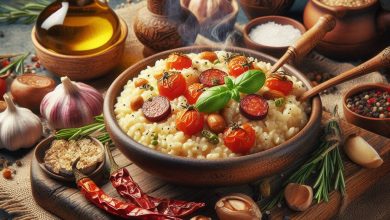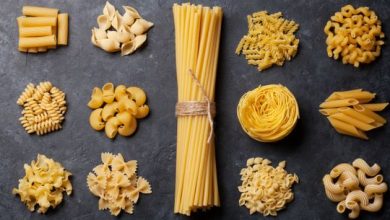A Culinary Journey Through Italy: Exploring the Rich Tapestry of Italian Cuisine
A Culinary Journey Through Italy

Introduction:
Italian food is a celebration of excellent ingredients and simplicity, and it is well-known across the world for its vivid tastes, regional variety, and age-old culinary traditions. Italy’s diversified terrain, which includes the bucolic hills of Tuscany and the stunning coastline of Sicily, is mirrored in its equally varied and mouthwatering cuisine.
The Essence of Italian Cuisine:
A. Simplicity and Freshness: The use of fresh, premium ingredients and a dedication to simplicity are the cornerstones of Italian cooking. Italian cuisine is distinguished and elevated on the international culinary scene by its emphasis on showcasing the inherent tastes.
B. Culinary Heritage: Italian food has a strong historical foundation, with recipes being handed down through the centuries. The Italian culinary tradition is based on a deep regard for food, a connection to the land, and the passage of time.
Key Ingredients in Italian Cooking:
A. Olive Oil: An essential ingredient in Italian cookery is olive oil, which is also used to season salads and enhance the flavor of many other foods. Italian kitchens are always stocked with extra virgin olive oil because of its fragrant, rich flavor.
B. Tomatoes: In Italian cuisine, tomatoes are used in a variety of ways, from fresh salad slices to sun-ripened pomodori in sauces. Pasta al pomodoro and Margherita pizza are two classic Italian meals that showcase the country’s love affair with tomatoes.
C. Pasta: A staple of Italian cooking, pasta comes in a wide variety of shapes and forms. Pasta shows the diversity of Italian cuisine, with the north loving robust tagliatelle and the south loving orecchiette.
Regional Specialties:
A. Northern Italy:
- Risotto: Risotto meals from Northern Italy are well known for being delicious and creamy. Risotto alla Milanese and Risotto ai Funghi are two delicious risotto variants made using rice varietals Arborio and Carnaroli.
- Pesto: Originating in the Liguria area, the fragrant pesto sauce is created with pine nuts, Parmesan, garlic, and olive oil. It adds color and vibrancy to pasta recipes like Trofie al Pesto.


B. Central Italy:
- Tuscan Cuisine: Hearty foods and strong tastes define Tuscan cuisine. Tuscan gastronomy is most characterized by dishes like Bistecca alla Fiorentina, a grilled T-bone steak, and ribollita, a soup made with vegetables and bread.
- Cacio e Pepe: Cacio e Pepe, a straightforward pasta dish with Pecorino Romano cheese and black pepper, has its origins in Rome. Its simple yet elegant preparation brings out the best aspects of Roman cooking.
C. Southern Italy:
- Pizza Napoletana: Pizza originated in Naples, in the southern region of Italy. A wood-fired oven is used to swiftly cook fresh mozzarella, basil, San Marzano tomatoes, and a thin, chewy dough to create a true Neapolitan pizza.
- Seafood Delights: Southern Italy, with its long coastline, is known for its seafood meals. The region’s appreciation of delicious, fresh fish is evident in dishes like fried calamari and spaghetti alle Vongole.
D. Sicilian Cuisine:
- Arancini: Arancini, which are deep-fried rice balls stuffed with ragù, mozzarella, and peas, are among the culinary offerings from Sicily. These golden treats are a staple of Sicilian street cuisine and a representation of its cuisine.
- Cannoli: Savoring Cannoli, crispy pastry tubes filled with creamy ricotta and frequently adorned with chocolate or candied fruit, is an essential part of any investigation of Sicilian cuisine.
The Art of Italian Cooking:
A. La Cucina Italiana: Cooking Italian food is an artistic endeavor, a well planned symphony of flavors. Seasonality, balance, and simplicity are prioritized, which calls for a mastery of ingredients and a dedication to culinary artistry.
B. Family and Community: Italian cuisine is a symbol of love, family, and community as much as a means of subsistence. A big aspect of dining in Italy is the shared satisfaction of getting together around a table and having a leisurely meal.


Conclusion:
Italian food continues to be a shining example of culinary brilliance because of its emphasis on premium ingredients, regional variety, and time-honored customs. Every area adds something unique to the complex tapestry of tastes that characterizes Italian cooking, from the famous pasta meals of the north to the succulent seafood specialties of the south. Enjoying the ease, quality, and creativity of Italian food not only pleases the palate but also takes us on a global culinary adventure that crosses national boundaries.





